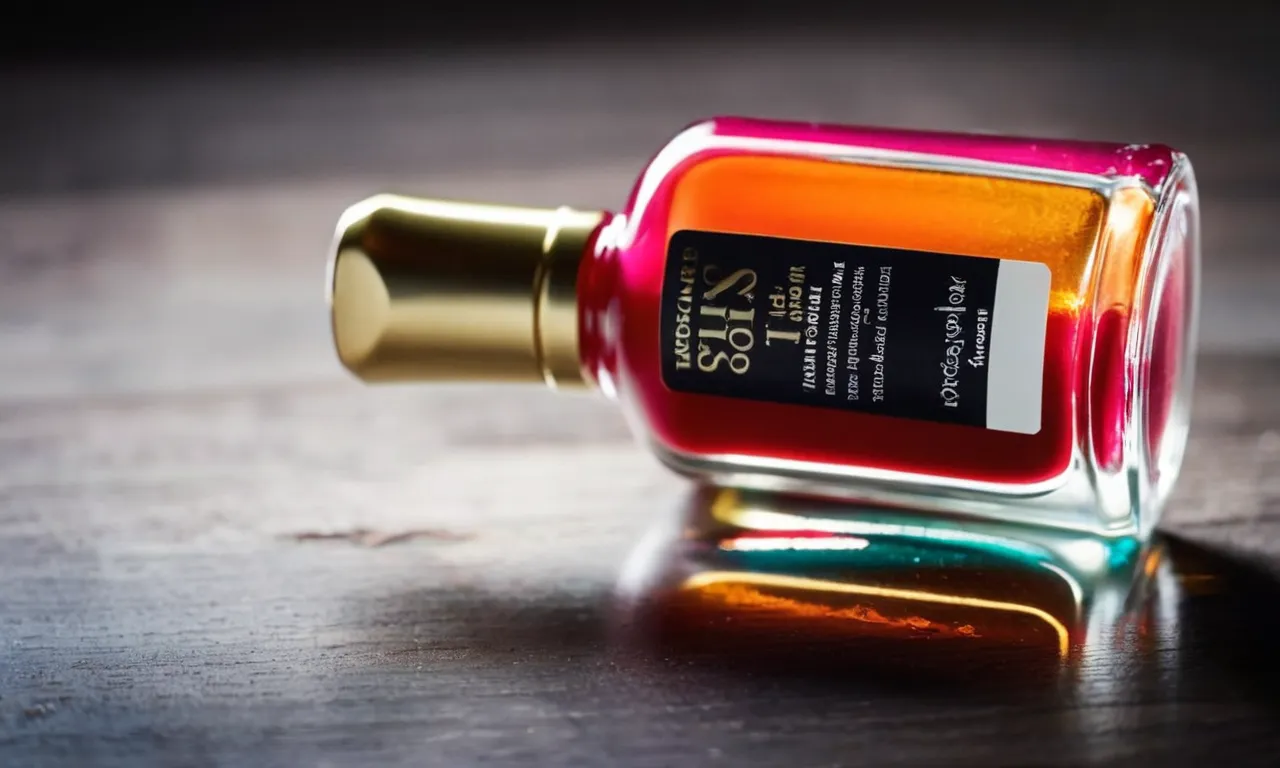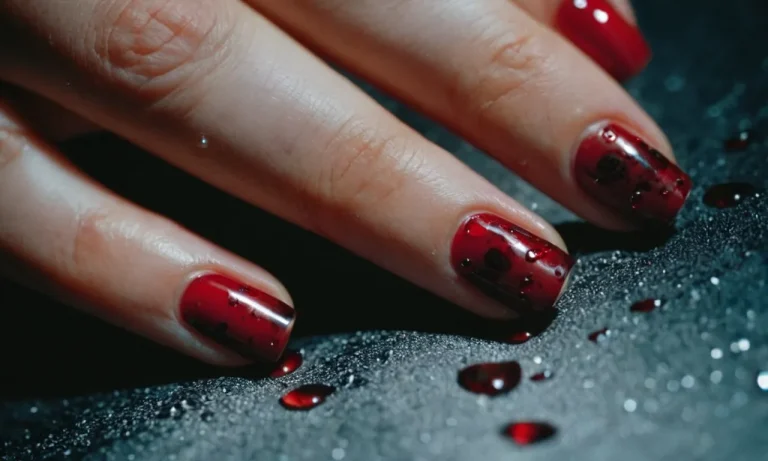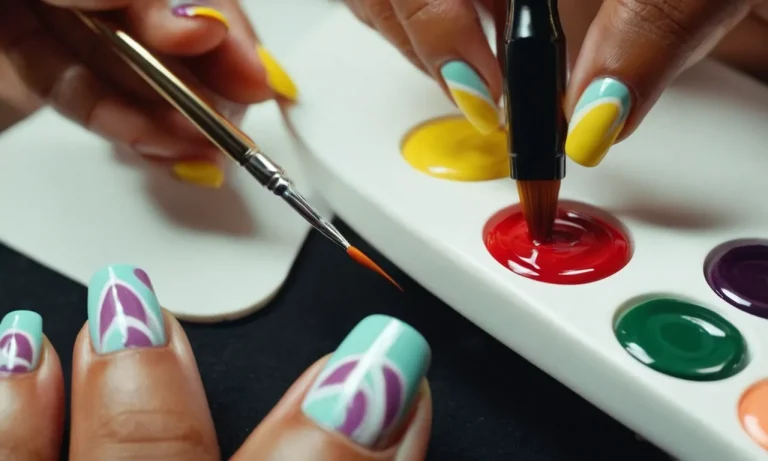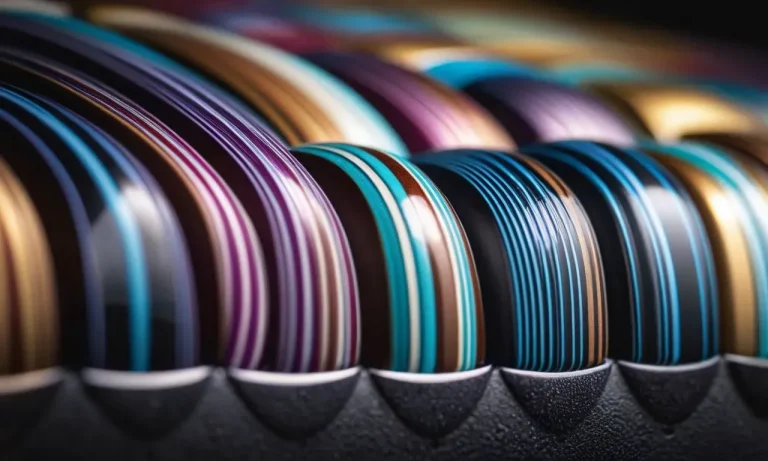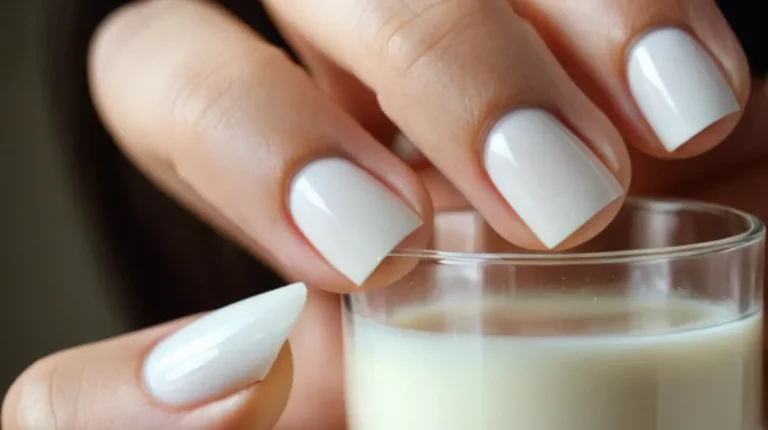Does Nail Polish Contain Alcohol?
Nail polish is a popular cosmetic product used by people of all ages to add color and decoration to fingernails and toenails. With its glossy finish and vast color options, it’s no wonder nail polish has remained a staple in beauty routines for decades.
If you’re short on time, here’s a quick answer to your question: Most nail polish does contain some amount of alcohol as one of the solvent ingredients that allow the polish to dry quickly once applied to nails.
In this comprehensive guide, we’ll take an in-depth look at the ingredients commonly found in nail polish, explaining which contain alcohol and why. We’ll also overview the different types of nail polish and their alcohol content.
Read on for the complete scoop on whether the nail lacquer in your collection contains alcohol.
Common Ingredients in Nail Polish
Nitrocellulose
Nitrocellulose acts as a film former in nail polishes. It is a key ingredient that allows the pigment to adhere to the nail surface and forms a protective coating. The amount of nitrocellulose determines the consistency – more leads to a thicker polish.
Cosmetic grade nitrocellulose is commonly used in quality nail enamel formulas in concentrations between 10-25%.
Adhesion Promoters
Ingredients like tosylamide and formaldehyde resin help the polish better cling to the nail. These adhesion promoters create a connection between the nail plate’s keratin and the nitrocellulose molecules. This leads to longer lasting manicures that are more chip resistant.
Quality nail polishes contain about 5% of these adhesives.
Resins and Plasticizers
Resins like sucrose acetate isobutyrate make the polish more flexible and less prone to cracks and flakes. Plasticizers such as dibutyl phthalate (DBP) also help prevent the polish from becoming brittle. They keep it smooth and easy to apply.
Around 10-15% resins and plasticizers are used in salon formulas.
Colorants
Pigments and dyes give nail polish its vivid colors. Popular options include titanium dioxide for whites, iron oxides for reds and blacks, carmine for deep reds, and ultramarines for blues. Concentrations vary from 5-15% depending on the desired color intensity.
Glitters and shimmers also add visual interest.
Solvents
Acetone, ethyl acetate, butyl acetate help thin out thick nail polish mixtures to achieve an easy to apply, smooth texture. But they also dry fast, allowing the polish to set quickly. Most regular polishes contain 20-50% solvents.
However, popular 7-free or toxin-free formulas limit harsh chemicals, bringing the solvent content down below 10%.
Types of Solvents Containing Alcohol
Ethyl Acetate
Ethyl acetate is an organic compound that is commonly used as a solvent in nail polish formulations. It is a colorless liquid that has a sweet, fruity odor. Ethyl acetate contains an ester functional group, which means it is formed from the reaction between ethanol (an alcohol) and acetic acid.
In nail polish, ethyl acetate acts as a solvent – it helps dissolve and disperse the pigments and film-forming agents like nitrocellulose. This allows for an even application of color on the nails. Ethyl acetate also influences the evaporation rate of the polish.
The higher the amount of ethyl acetate, the quicker the polish will dry.
Compared to other nail polish solvents, ethyl acetate is considered less harmful. It is classified as a “less toxic” solvent by the Environmental Protection Agency (EPA). However, ethyl acetate is flammable so precautions need to be taken when formulating and storing nail polishes containing this solvent.
Butyl Acetate
Butyl acetate is another ester that is commonly used as a solvent in nail polishes. Like ethyl acetate, butyl acetate contains the acetate ester functional group. The difference lies in the alcohol portion – butyl acetate is derived from butanol rather than ethanol.
Butyl acetate is a colorless liquid that has a sweet, fruity, banana-like odor. In nail polishes, butyl acetate performs many of the same functions as ethyl acetate. It helps to dissolve the pigments and film-forming agents, allowing for even color distribution and film formation on the nails.
Butyl acetate also influences the evaporation rate, with more butyl acetate leading to faster drying.
An advantage of butyl acetate over ethyl acetate is that it is considered a “non-toxic” solvent by the EPA. So butyl acetate may be favored in nail polishes marketed as “3-free” or “5-free” (i.e. free of the most toxic solvents). However, butyl acetate is still flammable like ethyl acetate.
Isopropyl Alcohol
Isopropyl alcohol, sometimes called rubbing alcohol, is a solvent that is occasionally used in nail polishes. Chemically, isopropyl alcohol contains a hydroxyl (-OH) functional group, meaning it is categorized as an alcohol.
In nail polishes, isopropyl alcohol helps to thin out the formulation and allow for even flow and application. It evaporates quickly, helping the polish to dry faster once applied to nails. Isopropyl alcohol can also help to sanitize nail polishes.
However, isopropyl alcohol is considered one of the more toxic nail polish solvents. Prolonged exposure can dry out and irritate the nails and skin. For this reason, many nail polish brands have moved away from using isopropyl alcohol in favor of less harmful solvents like ethyl acetate.
Some “toxic-free” nail polish brands, like Zoya and Acquarella, advertise containing no isopropyl alcohol. Yet other mainstream brands like OPI and Essie have also reformulated to remove this solvent.
Types of Nail Polish
Traditional Nail Polish
The classic type of nail polish has been around for ages. Traditional formulations contain a mixture of film-forming polymers, solvents like ethyl acetate or butyl acetate to keep it liquid, and plasticizers such as dibutyl phthalate that provide flexibility to the dry polish.
These polishes dry by solvent evaporation, often within 5-10 minutes (some fast dry versions can set in 60 seconds!). According to Nailsmag.com, traditional polishes usually last 3-5 days on fingernails before needing a fresh coat.
Gel Nail Polish
Gel polishes burst onto the scene around the early 2000s and have remained popular since then. As Healthline reports, these are distinct from traditional polishes in several ways: 1) They contain higher concentrations of plasticizers for flexibility; 2) They are cured under UV lamps for 30-60 secs to set instead of air drying.
Importantly, the cured polymers form strong interlinking chains that resist chipping or scratching way better than regular polish – thus gels can last a fab 2-4 weeks without needing changed!
Dip Powder Nail Polish
The dip powder technique has absolutely soared since 2016. It uses a powder made of acrylic polymers that set via polymerization. First a gel base coat is applied on nails, followed by dipping fingertips into the acrylic colored powder container and tapping off excess multiple times to build an adequate thickness.
The nails then get sealed by spraying with an activator spray. An advantage, according to nail pros, is thicker durable applications while avoiding UV light exposure! But removal requires filing off products from nails.
Shellac Nail Polish
Very comparable to gel polish, Shellac is an evolution of typical gel polish, created by Creative Nail Design. It employs the same chemistry of gel polish but has some unique features like glossy pro-focused colors, and a thinner viscosity for smoother application control.
It gets cured in LED lamps for 10 seconds versus UV lamps. An awesome feature is the scratch resistance and long 14+ day wearability per application!
Alcohol Content by Nail Polish Type
Traditional Lacquer
Traditional nail lacquers, also known as nail polishes, typically contain alcohol as a solvent. This allows the colored pigments and resins to flow onto the nail and dry quickly. Most standard nail polishes contain ethyl acetate, butyl acetate, and isopropyl alcohol as main ingredients after nitrocellulose resins.
The alcohol content helps traditional lacquer nail polish dry smoothly and prevents chipping or peeling. While the alcohol evaporates as the polish dries on your nails, frequent use of traditional lacquers can dry out the nails and cuticles over time.
Using a nourishing nail oil or cuticle cream can help counteract the drying effects.
Gel Polish
Gel polish contains some of the same ingredients as traditional lacquer, like pigments and nitrocellulose resin, but less solvents. Instead of drying by evaporation, gel polish is cured under an LED or UV light, allowing it to harden on the nails.
This means gel polish does not require as much alcohol as regular lacquer. However, many gel polish formulas still contain some alcohol, usually around 5-10%. This helps the polish apply smoothly before curing. Alcohol also allows gel polish to self-level on the nail.
The alcohol content is lower than regular nail polish lacquer, but can still contribute to dryness with very frequent use. Using cuticle oil is recommended when using gel polish often.
Dip and Shellac Systems
Dip and shellac systems take a different approach to coloring and protecting nails, without the need for solvents like alcohol. Dip powders are finely ground pigment particles that are layered on the nail and set with an activator liquid.
The powders form a hard, protective layer with an acrylic polymer reaction rather than solvent evaporation. Shellac systems work similarly, but use a gel base and top coat to seal in the color pigments.
Without alcohol as an ingredient, these systems avoid drying out the nails and cuticles as much as traditional lacquer and gel polish. However, removing shellac or dip powders also requires scraping or filing the layers off, which can damage the nail plate if done too aggressively.
Overall, dip and shellac are better options for those looking to avoid exposure to alcohol and other solvents found in regular nail polish.
Reducing Alcohol Exposure from Nail Products
Choose ‘3-Free’ Formulas
When purchasing nail polish, look for “3-free” formulas that do not contain dibutyl phthalate (DBP), toluene, or formaldehyde, which are common ingredients alongside alcohol that can be harmful. Many brands now offer these safer options.
Opt for Gentler Removal Methods
Instead of picking nail polish removers with acetone, which have high alcohol content, try gentler options:
- Acetone-free nail polish removers
- Soy-based removers
- Remover wraps or pads infused with oils
Soaking cotton balls with these products and holding them over nails for 30-60 seconds allows for easy, non-drying removal.
Use Minimal Coats
Using too many coats of nail polish at once can increase exposure to chemicals. Stick to a standard 2-3 thin coats, allowing each to dry fully before adding the next.
Take Frequent Breaks
Give nails a break from polish every 2 weeks if possible. According to the American Academy of Dermatology (AAD), this helps maintain nail health.
| With polish | Bare nails |
|---|---|
| 2 weeks | 1 week |
Letting nails breathe without polish allows moisture and nutrients to better penetrate the nail plate for strong, healthy growth.
Conclusion
In conclusion, most nail polish does contain some amount of alcohol, but not all formulas are created equal. Traditional nail lacquer tends to have the highest alcohol content due to the strong solvents needed for quick drying.
Gel polish has less alcohol than traditional lacquer, while newer dip powder and Shellac systems have the lowest alcohol levels. Those concerned with minimizing alcohol exposure from nail products can look for ‘3-free’ polish, use gentler removal techniques, apply fewer coats, and take breaks between manicures.
With knowledge of the common ingredients and a few smart tips, you can enjoy beautiful nails and nail art with peace of mind over what’s in your polish.

